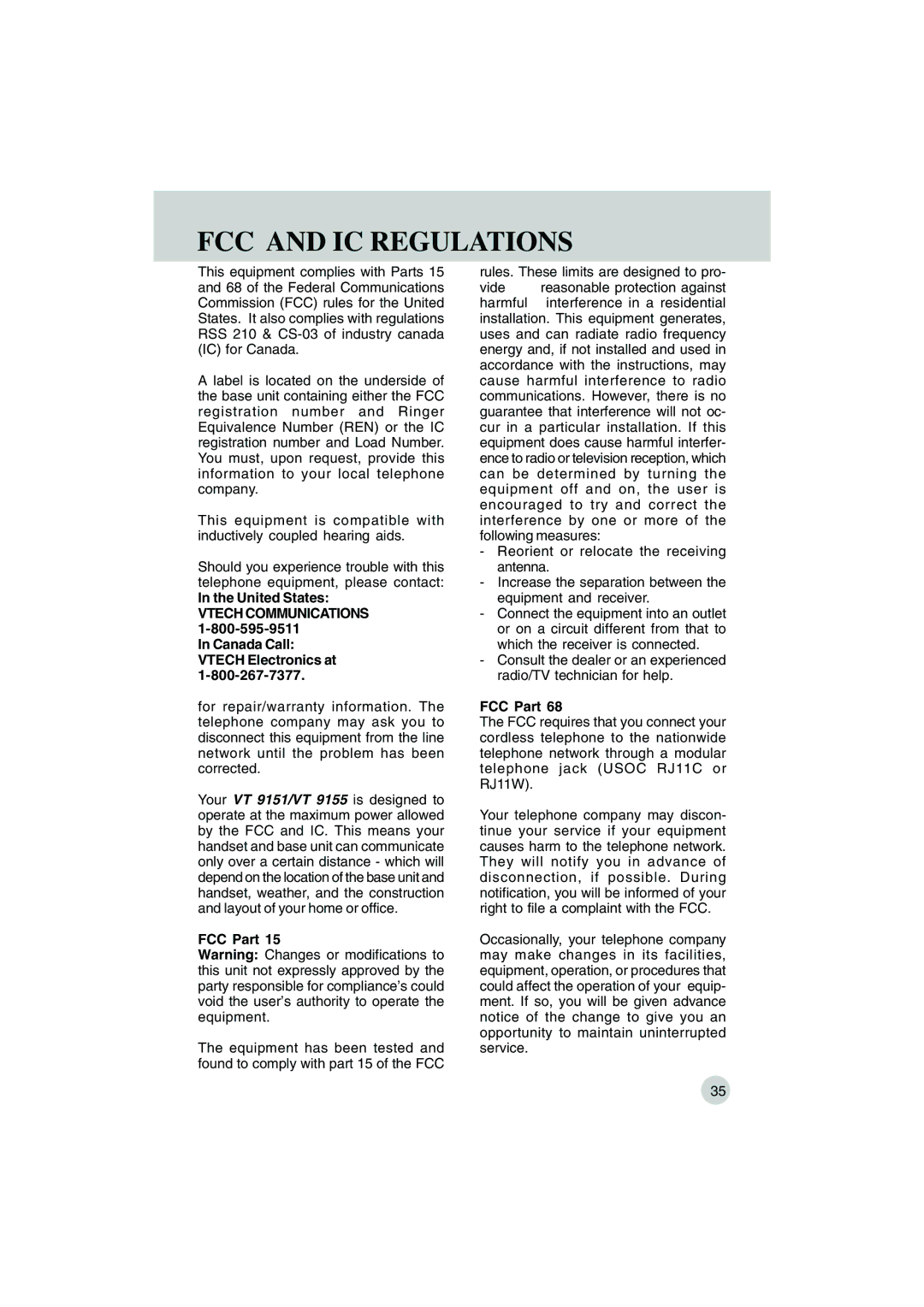
FCC AND IC REGULATIONS
This equipment complies with Parts 15 and 68 of the Federal Communications Commission (FCC) rules for the United States. It also complies with regulations RSS 210 &
A label is located on the underside of the base unit containing either the FCC registration number and Ringer Equivalence Number (REN) or the IC registration number and Load Number. You must, upon request, provide this information to your local telephone company.
This equipment is compatible with inductively coupled hearing aids.
Should you experience trouble with this telephone equipment, please contact:
In the United States:
VTECH COMMUNICATIONS 1-800-595-9511
In Canada Call: VTECH Electronics at 1-800-267-7377.
for repair/warranty information. The telephone company may ask you to disconnect this equipment from the line network until the problem has been corrected.
Your VT 9151/VT 9155 is designed to operate at the maximum power allowed by the FCC and IC. This means your handset and base unit can communicate only over a certain distance - which will depend on the location of the base unit and handset, weather, and the construction and layout of your home or office.
FCC Part 15
Warning: Changes or modifications to this unit not expressly approved by the party responsible for compliance’s could void the user’s authority to operate the equipment.
The equipment has been tested and found to comply with part 15 of the FCC
rules. These limits are designed to pro-
vide | reasonable protection against |
harmful | interference in a residential |
installation. This equipment generates, uses and can radiate radio frequency energy and, if not installed and used in accordance with the instructions, may cause harmful interference to radio communications. However, there is no guarantee that interference will not oc- cur in a particular installation. If this equipment does cause harmful interfer- ence to radio or television reception, which can be determined by turning the equipment off and on, the user is encouraged to try and correct the interference by one or more of the following measures:
-Reorient or relocate the receiving antenna.
-Increase the separation between the equipment and receiver.
-Connect the equipment into an outlet or on a circuit different from that to which the receiver is connected.
-Consult the dealer or an experienced radio/TV technician for help.
FCC Part 68
The FCC requires that you connect your cordless telephone to the nationwide telephone network through a modular telephone jack (USOC RJ11C or RJ11W).
Your telephone company may discon- tinue your service if your equipment causes harm to the telephone network. They will notify you in advance of disconnection, if possible. During notification, you will be informed of your right to file a complaint with the FCC.
Occasionally, your telephone company may make changes in its facilities, equipment, operation, or procedures that could affect the operation of your equip- ment. If so, you will be given advance notice of the change to give you an opportunity to maintain uninterrupted service.
35
